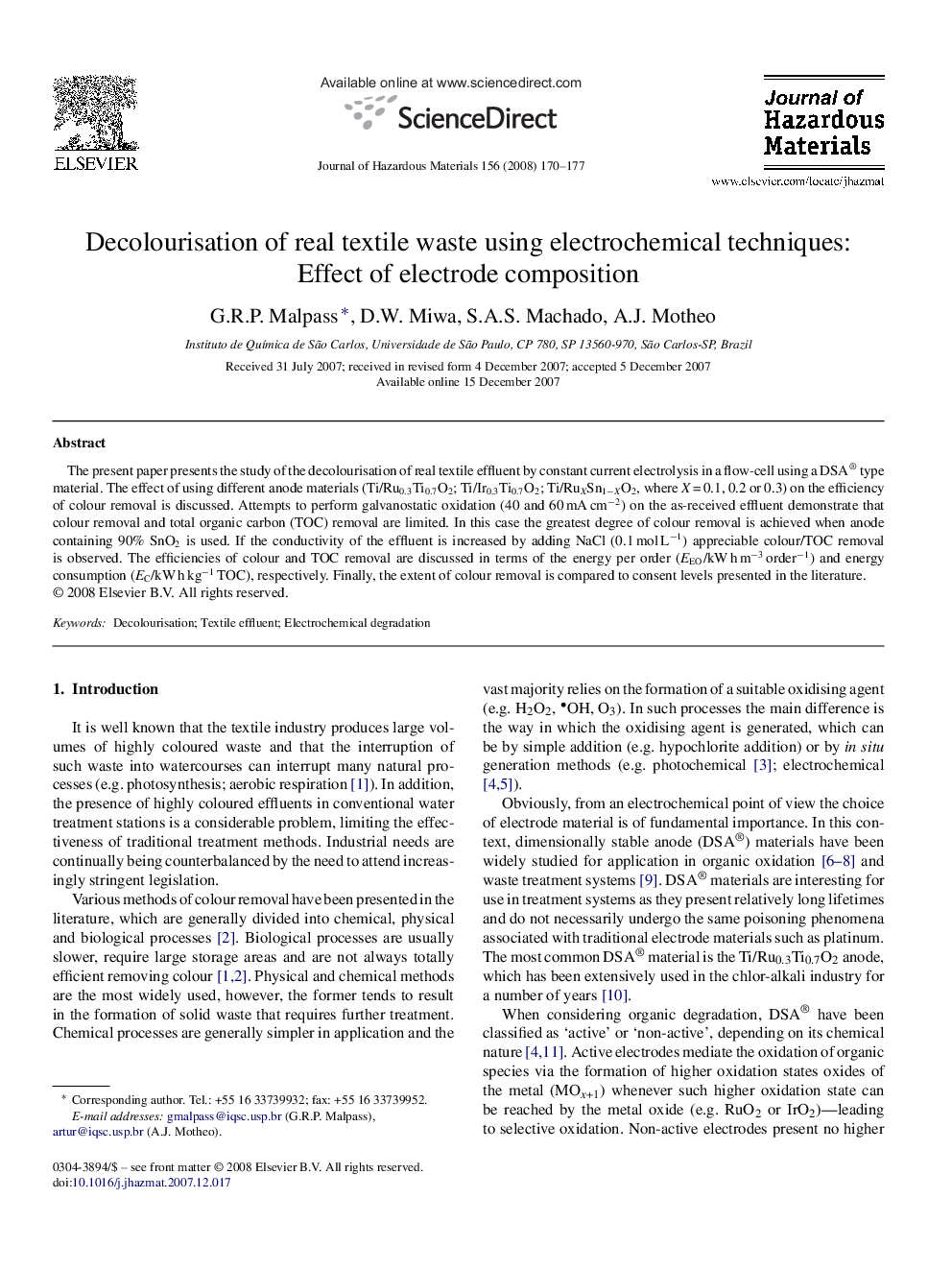| Article ID | Journal | Published Year | Pages | File Type |
|---|---|---|---|---|
| 583226 | Journal of Hazardous Materials | 2008 | 8 Pages |
Abstract
The present paper presents the study of the decolourisation of real textile effluent by constant current electrolysis in a flow-cell using a DSA® type material. The effect of using different anode materials (Ti/Ru0.3Ti0.7O2; Ti/Ir0.3Ti0.7O2; Ti/RuXSn1âXO2, where X = 0.1, 0.2 or 0.3) on the efficiency of colour removal is discussed. Attempts to perform galvanostatic oxidation (40 and 60 mA cmâ2) on the as-received effluent demonstrate that colour removal and total organic carbon (TOC) removal are limited. In this case the greatest degree of colour removal is achieved when anode containing 90% SnO2 is used. If the conductivity of the effluent is increased by adding NaCl (0.1 mol Lâ1) appreciable colour/TOC removal is observed. The efficiencies of colour and TOC removal are discussed in terms of the energy per order (EEO/kW h mâ3 orderâ1) and energy consumption (EC/kW h kgâ1 TOC), respectively. Finally, the extent of colour removal is compared to consent levels presented in the literature.
Related Topics
Physical Sciences and Engineering
Chemical Engineering
Chemical Health and Safety
Authors
G.R.P. Malpass, D.W. Miwa, S.A.S. Machado, A.J. Motheo,
